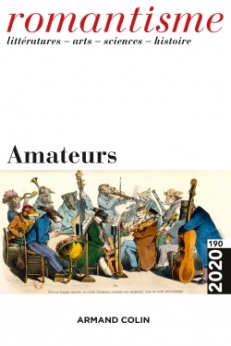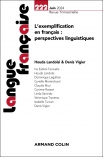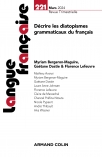
Romantisme N°190 (4/2020)
Pour acheter ce numéro, contactez-nous
Recevez les numéros de l'année en cours et accédez à l'intégralité des articles en ligne.
Cet article cherche à identifier les modalités selon lesquelles, dans les sciences humaines de la fin du XIXe siècle, l’amateur se distingue du scientifique. À travers l’examen de la collection d’ethnographie réunie par le médecin bâlois Leopold Rütimeyer et deux de ses amis naturalistes en 1889, qu’ils mettent en valeur pour justifier la création d’un musée ethnographique à Bâle, on montre que le fait d’être nommé « amateur » dépend de façon privilégiée du lien que l’on établit avec une institution et de la nature celle-ci : les institutions institutionnalisent. Je rappelle également que le poids donné à l’institution souligne l’importance de l’État dans l’établissement des catégories « amateur » ou « spécialiste » : c’est lui qui, à travers elle, hiérarchise les pratiques et les types d’acteurs, soulignant ainsi son rôle capital dans l’établissement des sciences contemporaines.
This paper seeks to identify how the amateur is distinguished from the professional scholar in the late 19th century humanities. Through the analysis of a ethnographic collection gathered by the Basel physician Leopold Rütimeyer and two naturalist friends, whose value they highlighted in order to found an ethnographic museum in Basel, I show that the qualification “amateur” is the product of one’s relation to an institution and depends on its type: institutions institutionalize. Furthermore, I demonstrate that this importance given to institutions reveals the role of the State in the distinction between “amateur” and “specialist”: it has the power to rank practices and actors, hence underlining its central contribution to the founding of contemporary science.

